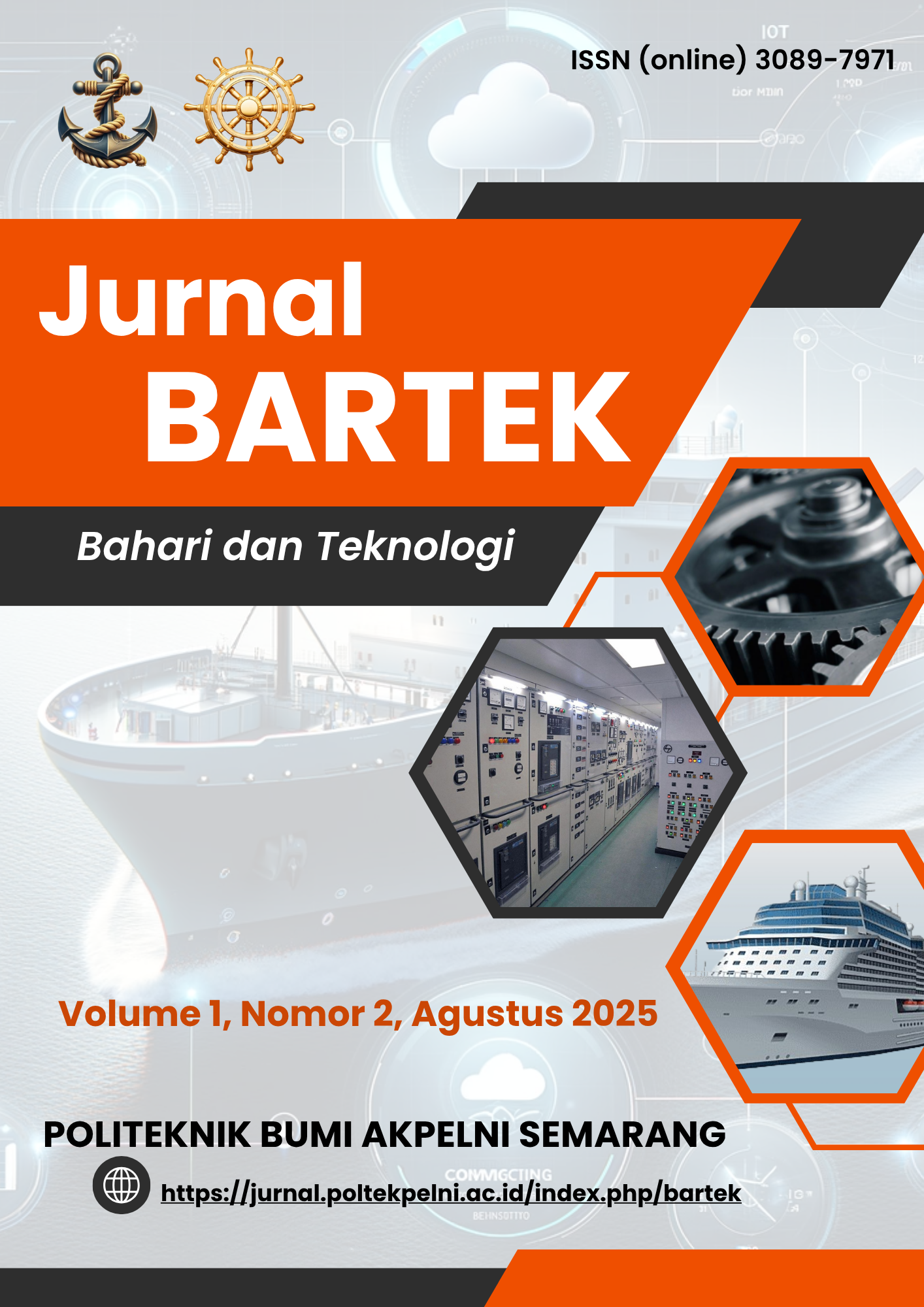Analisis Gangguan Kerja Potensiometer Pada Modul Kendali Steering Utama Type Rexpeller MV. Fanny
DOI:
https://doi.org/10.6425/6easm369Keywords:
Potentiometer, rexpeller thruster steering, non-linear voltage and resistance.Abstract
Modern ship steering systems utilizing Rexpeller Thrusters rely heavily on the accuracy of position sensor readings, particularly potentiometers. This study analyzes signal disturbances in the potentiometer of the MV Fanny steering system, characterized by instability in resistance and output voltage. A qualitative descriptive research method was employed. Measurement results indicate voltage spikes at 50° and drops at 90°, as well as resistance anomalies at 70° and 110°. These disturbances cause the control system to receive erroneous thrust position data, triggering unnecessary automatic corrective commands, known as “self-moving steering.” Resistance–voltage versus angle plots reinforce the indication of localized damage on the potentiometer’s resistive track. System simulation shows that the error signals activate the ECU, causing continuous corrective actions. The implications of this research reveal that potentiometer instability poses a serious threat to ship operational safety by inducing uncommanded rudder movements and reducing control accuracy. This underscores the necessity of upgrading sensor technology from analog potentiometers to more reliable feedback devices and implementing periodic signal monitoring. Academically, the study contributes to the development of electrical engineering knowledge by establishing the relationship between sensor degradation and control instability. Inspection findings confirm that potentiometer faults significantly disrupt ship navigation, thus requiring recalibration, physical inspection, component replacement, and the implementation of redundant sensor systems to ensure steering reliability and safety.
Downloads
Published
Issue
Section
License
Copyright (c) 2025 JURNAL BAHARI DAN TEKNOLOGI (BARTEK)

This work is licensed under a Creative Commons Attribution-ShareAlike 4.0 International License.








